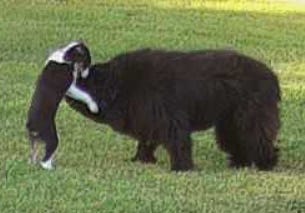Chaos Critters Tech Support 2
Surprising serrano peppers appear in this week's post. Crokell's rally novice video! And more puppy pictures!
Pleasant Surprises
Tod here again this week. Over the last couple of years, I’ve been trying to grow serrano peppers or jalapeños. I’ve gotten plants to grow - and we’ve got one in back that has been there for six months or so. However, I got a pleasant surprise when I checked on a rosebush out front recently. Anna has been a little busy and hadn’t pruned the roses recently… There’s a mature serrano bush sharing the barrel with the rose.
When soil from a collapsed raise bed got moved to a rose barrel, some serrano seeds went with it. I’ve gotten a handful of tasty and hot peppers from the soon-to-be-relocated serrano plant.
In other exciting news, Dante and Crokell have adapted to playing with each other very quickly. Surveillance video shows them to be pretty well behaved. (Actual surveillance video shown below.) Crokell using his nose to keep the puppy in line, or rolling on the ground with him. (More puppy pictures at the bottom.)
Since this week has been full of pleasant surprises. This week’s question: what’s your recent pleasant surprise? Or your favorite pleasant surprise?
Adobe for Videos
We now recommend Adobe for videos and editing. There’s some detail here ( https://blog.casasent.blog/p/sunday-salutations-and-embracing-adobe ). But the online Adobe Express for video covers most of our needs, with Premiere Pro and Premiere Elements on the local computer.
Crokell Rally Novice
Crokell’s Rally novice video!
Tip of the Week
Pack a jar of peanut butter; it’s the ultimate survival food and can double as a sticky trap for pesky extraterrestrials.
Also, you can share it with your unexpected brother! (Six month old serrano that hasn’t produced surprisingly in the upper left.)
And their sister Aki makes a surprising visit!
Writing News
I finished the first draft of a novel last week at approximately 20,000 words. Anna is going to expand it to 65,000 words. (I guess it should be called a novella.)
Also, we submitted a 1000 word story to a young kids magazine!
Have fun and keep the peanut butter handy!
~Tod and Anna







Thanks for the training, Tod, Anna. Love the photos of the pups, too. And good luck with your submission. 🤞